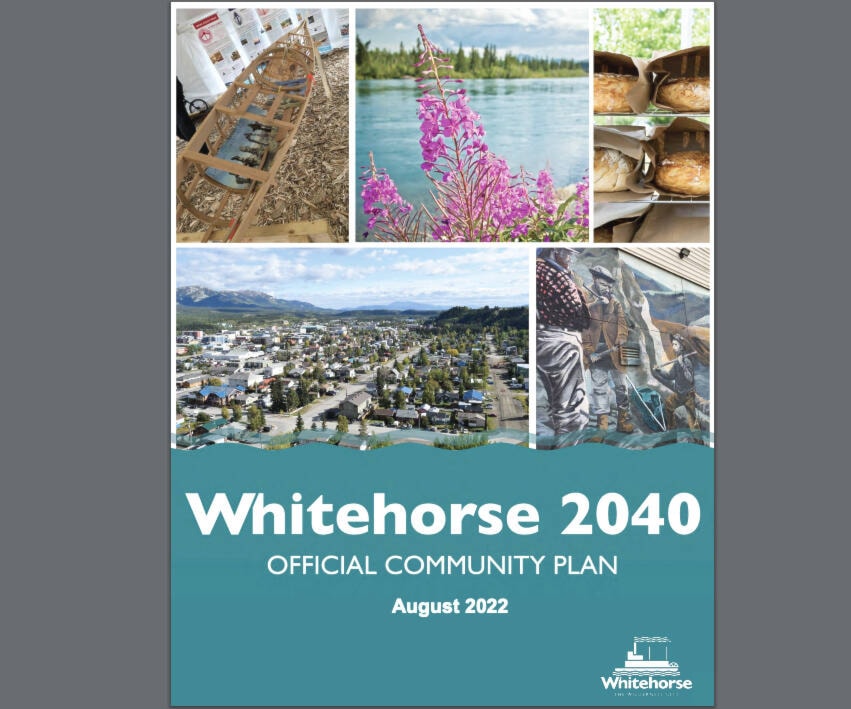A potential quarry for the Stevens area will not be on the table as the Official Community Plan [OCP] moves forward.
In a 4-3 vote at its Jan. 16 meeting, Whitehorse city council members voted to designate what had been proposed for quarrying in the Stevens area as future planning in the proposed OCP. Councillors Dan Boyd and Jocelyn Curteanu as well as Mayor Laura Cabott voted against taking the quarry designation out.
Council later voted 6-1 in favour of second reading of the OCP with Boyd being the lone vote against it.
The area proposed for quarrying was smaller than the site that had originally been suggested, with city staff describing it as a compromise between the interests of residents, who spoke out against a quarry, and industry, which have cited the need for a gravel supply as the city continues to grow.
Coun. Ted Laking, who proposed the amendment to take out the quarry designation, pointed to petitions and submissions made against having a site identified for natural resource extraction and highlighted the proposed study of the gravel supply in and around Whitehorse as a way to find other areas, while the three council members opposed argued the need for an identified gravel source that’s in or near the city even as other areas may be studied.
“I think we’re making a mistake,” Boyd said, opting to vote against second reading of the OCP based on the lack of an identified site for gravel extraction in the document.
Higher development costs, increased emissions that will come from the greater distance to get gravel were among the impacts listed by the three councillors who opposed the future planning designation for the site. Curteanu said she had hoped to see more uptake on the idea for a smaller area identified in the Stevens area for gravel extraction than had been put forward in the first draft of the OCP.
The future planning designations mean more work could be done on planning for the site. If third reading of the OCP is passed, it would mean an OCP amendment would be needed and the designation changed before zoning could be put in place for a quarry.
While both Curteanu and Cabott stated their support for a small site in the Stevens area to be identified for quarrying, they also voted in favour of moving on to second reading, though Cabott described the vote as “a tough one” for her.
Overall, she said, the proposed OCP is a good document that has seen a lot of work, going back to the previous council when work started on it.
Other alterations to the proposed document ahead of second reading dealt with building height limits, which would allow for up to 30 metres in certain parts of the downtown along with some wording changes aimed at outlining goals for the city around accessible transportation, emphasizing partnerships with First Nations and local groups; and limiting development in environmentally sensitive areas.
The most recent version of the OCP followed a second public hearing that had been triggered by substantial changes that were made following the first hearing.
Coun. Kirk Cameron described the process as “an incredibly long road to get us to a document that I’m not quite proud of.”
He acknowledged there’s unknowns when it comes to gravel extraction and the potential study on gravel supply that could also involve the Yukon government.
“Everything else in this plan has serious substance behind it,” he said, highlighting the focus on working with First Nations as well as dealing with climate change and transportation as the city grows.
“I’m proud that we took the time to get it to where we have it tonight,” Cameron said.
Laking cited three major initiatives from the plan in outlining his support. He pointed to the possibility of a second Yukon River crossing in the city (which the city has also outlined in its capital spending plan to be studied), an evaluation of the traffic between Quartz Road and up Mountain View Drive (another item outlined in the city’s capital budget) to Whistle Bend and Porter Creek, and the move to increase building height limits.
He argued increasing the height limit could address a variety of issues.
“As we’ve continued to expand outward over the years, it’s become more expensive to maintain the city to provide services,” he said. “I think that going up a little bit (in building height) is a good thing, because it will be easier for us to provide services if people are more localized in certain areas.”
With second reading of the OCP now passed, the document will go through a ministerial review at the territorial level before coming back to council for third reading. The ministerial review can take up to 45 days.
Contact Stephanie Waddell at stephanie.waddell@yukon-news.com
